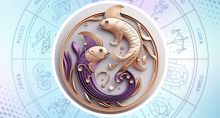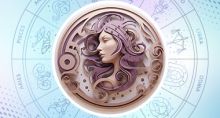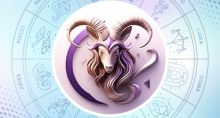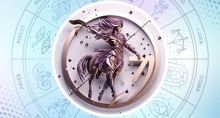The Science of Homa
Marriage, Naamkaran (naming ceremony), Upanayanam (sacred thread ceremony), Griha Pravesam, Poojas, etc., are important occasions in the lives of Hindus. On such occasions, it is the custom among many Hindus to perform Homa or Havan. Most Scriptures consider Homa mandatory for auspicious occasions and purification rituals.
What is Homa?
Homa is essentially a Vedic fire ritual performed as part of a formal ceremony. The technique came to us through eminent sages or Rishis as well as other enlightened Masters. Homa can supposedly manifest what we desire. It could be wealth, good health, success in business, protection from enemies, etc. It is also performed to eliminate negative energies and attract positive energies.
Atharva Veda claims that all living beings were created from a grand eternal Yajna. The Fire ceremony is the center of manifestation of all living beings.
The Use of Fire in Homa
Agni or Fire is the subtlest element that we can perceive with our eyes. It is the medium or agent in the Homa that helps invoke the presence of God. The offerings (Ahuti) made to it are material and symbolic. The priest offers several items like ghee, milk, sugar, herbs, spices, saffron, coconut, grains, seeds, and petals as sacrifices to the sacred fire. The word ‘Homa’ comes from the Sanskrit root ‘Hu,’ which means “to offer” or “to present”.
During the Homa, the priest first meditates on the deity and energizes the space where the Homa is going to take place. The energy gets transferred to the Air element as the priest chants Mantras. This energizes the fire in the Homa Kunda. The energy that builds up in the fire gets transferred to the water in the Kalash (pot). When the priest sprinkles this water on the deity or the devotee, the energy gets transferred to the Earth element.
Fire is one of the five natural elements (Panchabhootas), which also include Air, Water, and Ether or space. Sacred fire has the power to destroy all negative energies in the environment and purify it.
Fire is also the medium through which formless energy acquires form. It is also through fire that the matter which has form returns to its original state of energy. Mythology says that Goddess Meenakshi supposedly emerged from the Homa fire. Thirugnanasambandhar and Vallalar (Shaivite saint-poets) supposedly dissolved their bodies in the yogic fire. The sacred fire of Homas can help manifest our desires into reality, as it is the messenger that carries our prayers to the deities.
The Science of Homa
Fire is the key link between the consciousness of the cosmos and that of human beings. During the Homa, the priest invokes the deity’s presence in the fire through certain Mantras. Mantras came to us from enlightened Rishis or sages, so they are very powerful. Once it is energized, the fire becomes a deity and remains so until the Homa ends. The deity is worshipped, and many oblations (Ahuti) are offered to the fire to manifest whatever is desired. The smoke from the Homa Kunda energizes the entire area where the Homa takes place, and it creates positive vibrations in that place.
The Homa will have a positive effect not only on the people who are taking part in it, but also on those whose names were chanted in the Sankalpa Mantra, even if they are far away.
The Purpose of Homa
The main purpose of a Homa is to commune with the energies of the universe. The devotee makes their Sankalpa (resolve) with different natural elements bearing witness to it. Homa can purify our internal energy and environment. During the Homa, we have to sacrifice our selfishness, ego, and material attachments and become more compassionate.
For the Homa, an elevated platform is built using bricks, and mango wood is used for the fire. Butter or ghee is poured along with milk, food grains, incense, and seeds, as well as other ingredients. All the while, the priest chants Mantras to invoke God and seek divine blessings.
Once the ritual is over, the brick platform is demolished. The Homa takes place in the center of a space. There will be a place for the chief celebrant, who is the priest, and for the main worshippers (sponsors of the Homa) with the offerings so that they can sit around the fire when the ceremony takes place.
Other devotees sit in an outer circle around the fire. The sacred Mantras that the priest chants during the Homa create certain vibrations that repel negative energies and attract positive energies.
In the old days, Homa was the only way to connect to a deity, and hence, Homas took place daily. Ideally, one should perform a Homa during the morning as it is more favorable for all religious activities, and the air will be full of Prana (life force) at that time.
There are different types of Homas according to the occasion, reason, and deity.
Some Popular Homas
Ganapati Homa - for removing obstacles
Sudarshana Homa – for victory over enemies, destroying negativity, protection from the evil eye, vitality, and good health.
Navagraha Homa – for removing planetary Doshas.
Rudra Homa - for dispelling negativity.
Dattamala Mantra Homa – to ward off evil spirits, remove effects of black magic, relief from mental disorders, and mental peace.
Kartaveeryarjuna Homam – for relief from debts and recovery of lost wealth and property.
Sree Swayamvaraambha Parvati Homa – for getting a good marriage alliance, removal of obstacles and delays in marriage.
Maha Mrtiyunjaya Homa – for longevity, good health, wealth, and removal of obstacles caused by planetary Doshas.
Bagalamukhi Homa – for success in the resolution of disputes and legal matters.
Sree Rajamaatangeshwari Homa – for success in political matters, charisma, and popularity.
Benefits of Homa
Homa can purify the body, mind, soul and the environment. During a Homa, when fire comes into contact with air, it becomes pure and lighter in nature. When this light air diffuses into the atmosphere, it replaces the impure air.
The fragrance of burning ghee also purifies the physical environment, and its fragrance will mix with the atmosphere.
The scents from the aromatic herbs and spices used during the Homa remove bad odors from the atmosphere. The offerings one makes and the specific Mantra that the priest chants can boost the chakras and strengthen the body and mind.
The main purpose of all Homas is to bring about universal happiness and peace.
Every Homa has an effect that depends on the energy invoked. But, its essential aim is to promote internal realization and universal harmony.




















